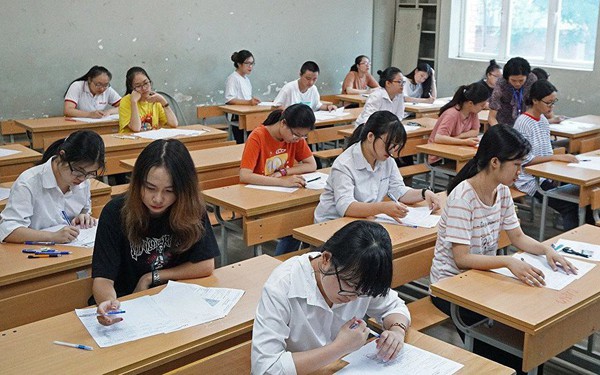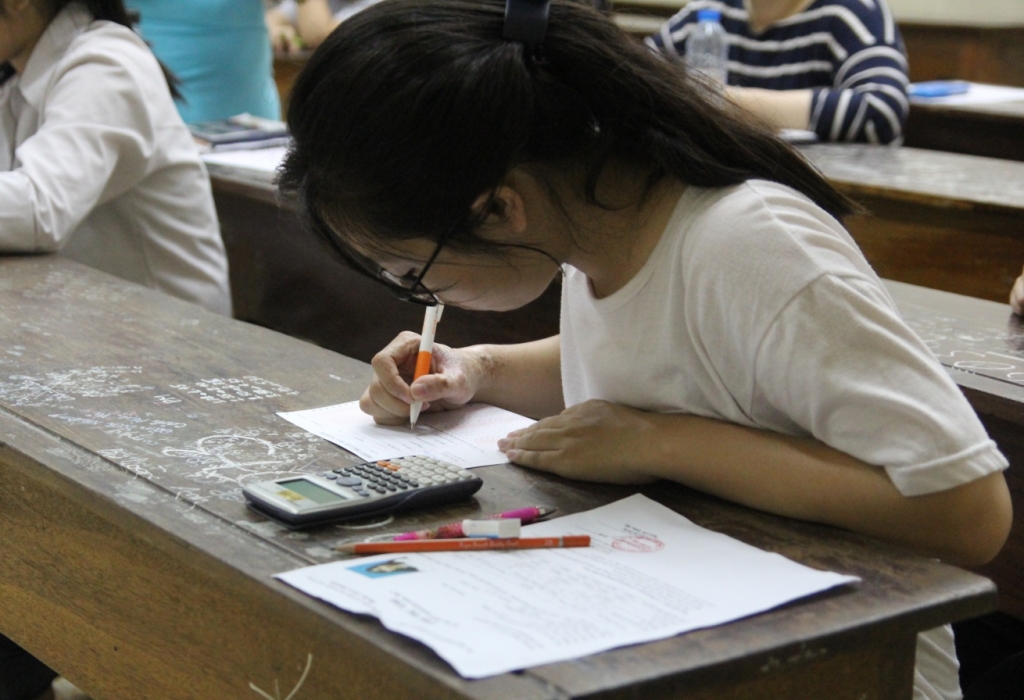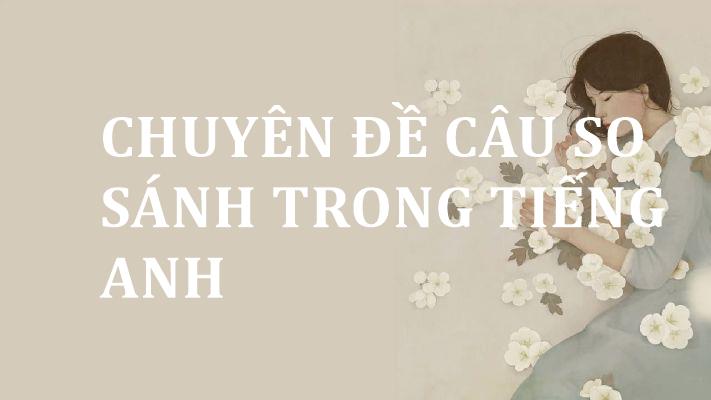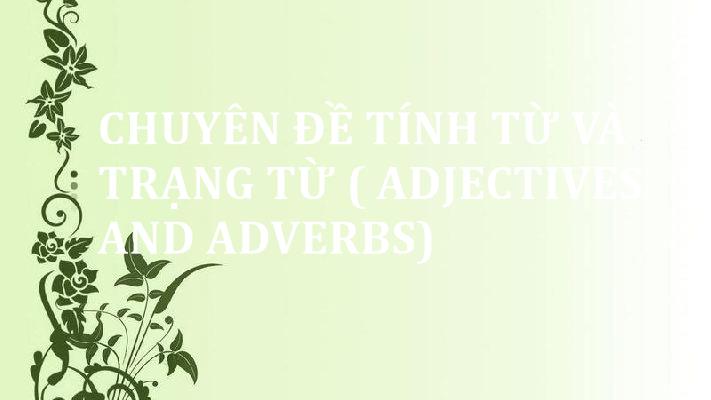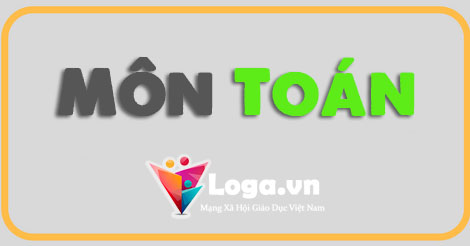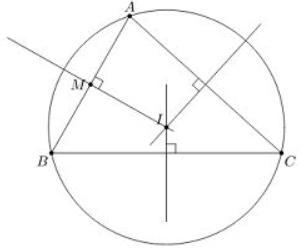Chuyên đề:
Mệnh Đề Quan Hệ - Relative Clauses
* Định nghĩa:
- Mệnh đề quan hệ là mệnh đề phụ nối với mệnh đề chính bởi các đại từ quan hệ hoặc các trạng từ quan hệ.
- Mệnh đề quan hệ đứng ngay sau từ mà nó bổ nghĩa dùng để làm rõ nghĩa của danh từ đó hoặc phân biệt danh từ đó với danh từ khác.
- Chức năng: giống như một tính từ, vì vậy nó còn được gọi là mệnh đề tính ngữ.
A. Đại từ quan hệ (Relative Pronoun).
|
Danh từ đứng trước |
Chủ ngữ (Subject) |
Tân ngữ (Object) |
Sở hữu (Possessive) |
|
Người (Person) |
who, that |
who / whom / that |
whose |
|
Vật (Object) |
that, which |
which / that |
whose |
1. Who.
- Thay thế cho từ chỉ người, đứng làm chủ ngữ của mệnh đề quan hệ.
- Theo sau “who” là một động từ.
Ví dụ:
The man who is standing right after the red car is my father.
People who spend too much time using computers are at risk of obesity.
2. Whom.
- Thay thế cho từ chỉ người nhưng chỉ dùng làm tân ngữ cho mệnh đề quan hệ.
- Tuy nhiên trong văn nói, ta có thể dùng “who” thay cho “whom”.
Ví dụ:
The girl whom I talked to yesterday was very interesting.
The man whom I want to see wasn’t here.
The girl to whom you’re talking is my friend.
3. Which.
- Thay thế cho đồ vật hoặc sự vật làm chủ ngữ hoặc tân ngữ cho mệnh đề quan hệ.
- Ngoài ra, “which” còn thay thế cho cả mệnh đề đứng trước nó, trong trường hợp này “which” luôn đứng sau dấu phẩy.
Ví dụ:
Do you see the cat which is lying on the roof?
He couldn’t read which surprised me
4. That.
- Dùng thay thế cho cả người và vật. Nó có thể thay cho “who”, “whom”, “which”.
- Trong mệnh đề quan hệ xác định ta không dùng “that”.
Ví dụ:
I don’t like the table that stands in the kitchen.
5. Whose.
- Là đại từ quan hệ sở hữu dùng thay cho 1 tính từ sở hữu hoặc sở hữu cách.
- Cụ thể dùng để chỉ sở hữu của người và vật.
Ví dụ:
Do you know the boy whose mother is a nurse?
Mike, whose bike was stolen last month, is now in hospital.
* Phân biệt đại từ quan hệ: Chủ ngữ và Tân ngữ.
Đại từ quan hệ chủ ngữ và tân ngữ không thể được phân biệt qua hình thức vì giống nhau mà chỉ có thể phân biệt qua vị trí của chúng qua mệnh đề quan hệ.
- Nếu đại từ quan hệ đứng ngay trước 1 động từ thì đó là đại từ quan hệ chủ ngữ.
- Nếu đại từ quan hệ đứng trước 1 danh từ hay 1 đại từ, sau đó mới là 1 động từ thì đó là đại từ quan hệ tân ngữ.
B. Trạng từ quan hệ (Relative adverbs).
Trạng từ quan hệ thường được dùng thay thế cho đại từ quan hệ kèm giới từ làm cho câu cụ thể hơn.
1. When: Dùng thay thế cho từ chỉ thời gian.
….N (time) + WHEN + S + V … (WHEN = ON / IN / AT + WHICH)
Ví dụ:
Do you still remember the day when we first met?
Do you still remember the day on which we first met?
I don’t know the time when she will come back.
That was the day when I met my wife.
2. Where: Dùng sau 1 danh từ chr mơi chốn.
….N (place) + WHERE + S + V …. (WHERE = ON / IN / AT + WHICH)
Ví dụ :
The hotel where we stayed wasn’t very clean.
This is my hometown where I was born and grew up.
The restaurant where we had Lunch was near the airport.
3. Why: Chỉ lí do, thường đứng sau “the reason”.
…..N (reason) + WHY + S + V …
Ví dụ:
I don’t know the reason why you didn’t go to school.
I don't know the reason why you didn't go to school.
C. Các loại mệnh đề quan hệ.
Có 3 loại mệnh đề quan hệ:
I. Mệnh đề quan hệ xác định.
- Mệnh đề quan hệ xác định giới hạn nghĩa hoặc bổ nghĩa cho danh từ đứng trước nó, ngoài ra còn dùng để đưa ra định nghĩa.
- Mệnh đề quan hệ xác định là bộ phận rất quan trọng trong câu, không thể bỏ đi vì nếu bỏ đi thì câu không rõ ràng về nghĩa.
* Ta có thể bỏ đại từ quan hệ: “who, whom, when, that” khi chúng làm tân ngữ của mệnh đề quan hệ.
Ví dụ:
Do you know the name of the man who came here yesterday?
The man (whom / that) you met yesterday is coming to my house for dinner.
→ Mệnh đề xác định không có dấu phẩy
II. Mệnh đề quan hệ không xác định.
- Dùng để bổ sung thông tin cho danh từ đứng trước.
- Mệnh đề quan hệ không xác định chỉ là phần giải thích thêm, nếu bỏ đi mệnh đề chính vẫn rõ nghĩa.
- Mệnh đề quan hệ không xác định được ngăn cách với mệnh đề chính bằng dấu phẩy.
- Ta buộc phải dùng mệnh đề quan hệ không xác định để nối câu trong các trường hợp danh từ trước mệnh đề quan hệ có:
+ Đại từ chỉ định: this, that, these, those.
+ Tính từ sở hữu: my, his, her, your,…
+ Danh từ trước mệnh đề quan hệ là tên riêng, danh từ riêng.
+ Vật duy nhất.
+ Cụm trạng ngữ chỉ nơi chốn.
* Lưu ý: Không được bỏ đại từ quan hệ trong mệnh đề quan hệ không xác định.
Ví dụ:
Miss Lan, who taught me English, has just got married.
That man, who is holding a flower, is very strange.
The sun, which rises in the East, provides human with light.
III. Mệnh đề quan hệ nối tiếp.
- Dùng để giải thích cả 1 câu trước nó, loại mệnh đề này chỉ dùng đại từ quan hệ “which” và dùng dấu phẩy tách 2 mệnh đề.
1. Mệnh đề quan hệ có giới từ.
- Nếu trong mệnh đề quan hệ có giới từ thì giới từ có thể đứng ở 2 vị trí: cuối mệnh đề quan hệ hoặc đứng đầu mệnh đề quan hệ.
* Lưu ý: Khi giới từ đứng cuối mệnh đề quan hệ thì ta có thể dùng “who, whom, that” chỉ người và “which, that” chỉ vật, thậm chí của thể bỏ mệnh đề quan hệ.
Tuy nhiên khi giới từ đứng trước đại từ quan hệ thì ta buộc phải dùng “whom” cho người, “which” cho vật và không thể bỏ đại từ quan hệ.
Ví dụ:
The man about whom you are talking is my brother.
The man (whom) you are talking about is my brother.
The picture at which you are looking is very expensive.
The picture (which) you are looking at is very expensive.
2. Mệnh đề quan hệ giản lược.
- Với một số loại mệnh đề quan hệ, ta có thể lược mệnh đề quan hệ thành cụm từ quan hệ, có 3 cách rút gọn:
a. Dùng phân từ: phân từ hiện tại (V_ing) và phân từ quá khứ (VPII).
* Ta rút gọn mệnh đề quan hệ thành dạng V_ing khi động từ trong mệnh đề quan hệ đó ở thể chủ động.
Cách rút gọn: bỏ đại từ quan hệ, bỏ trợ từ (nếu có), chuyển động từ chính sang dạng V_ing.
* Ta dùng phân từ quá khứ để rút gọn mệnh đề khi động từ trong mệnh đề đó ở thể bị động.
Cách rút gọn: bỏ đại từ quan hệ, bỏ trợ từ (nếu có), giữ lại động từ chính ở dạng phân từ II.
Ví dụ:
The girl who is sitting next to you is my sister = The girl sitting to you is my sister.
The man who lives next door is English = The man living next door is English.
The book which is written by Mr.A is interesting. = The book written by Mr.A is interesting.
b. Dùng “to V”.
* Ta rút gọn mệnh đề quan hệ thành cụm “to V” khi danh từ trước mệnh đề quan hệ chứa: the last, the first, the second, ..... the only; khi trong mệnh đề quan hệ chứa các modal verbs: must, have to, van, should.
Cách rút gọn: bỏ đại từ quan hệ, bỏ modal verbs (nếu có), chuyển động từ chính về dạng nguyên thể có “to”.
* Lưu ý:
- Nếu chủ ngữ 2 mệnh đề khác nhau thì thêm cụm “for sb” trước “to V”, tuy nhiên nếu chủ ngữ là những từ chung chung (we, people, they, ….) thì không cần ghi ra.
- Nếu trước địa từ quan hệ có giớ từ thì khi rút gọn ta phải đưa giới từ về cuối câu.
Ví dụ:
Johnny was the last one who left the lab. = Johnny was the last one to leave the lab.
Smartphones are a good tool which people can use to communicate with others.
= Smartphones are a good tool for people to communicate with others.
c. Dùng cụm danh từ (đồng cách danh từ).
Ta rút gọ mệnh đề dùng cụm danh từ khi mệnh đề quan hệ có cấu trúc:
S + Be + ---- cụm giới từ.
---- cụm danh từ.
Cách rút gọn: bỏ đại từ quan hệ, bỏ “be”.
Ví dụ:
Do you like the picture which is on the left of the flower vase.
= Do you like the picture on the left of the flower vase.
Football, which is a popular sport, is very good for health
= Football, a popular sport, is very good for health.
LƯU Ý:
1. Các đại từ quan hệ có chức năng trong mệnh đề quan hệ xác định đều có thể lược bỏ.
Tuy nhiên các đại từ quan hệ có chứ năng tân ngữ trong mệnh đề quan hệ không xác định không thể lược bỏ.
2. Khi danh từ được nói đến là tân ngữ của giới từ thì ta có thể đưa giới từ đó lên trước đại từ quan hệ.
Tuy nhiên nếu làm như vậy thì chỉ được dùng “whom, which”.
3. Nếu trong mệnh đề quan hệ có các từ chỉ số lượng như: all, most, none, neither, any, some, either, few, a few, both, half, each, several, many, much, …. thì các từ này đứng đầu mệnh đề quan hệ và sau chúng là “of whom” thay thế cho người và “of which” thay thế cho vật.
Ví dụ:
I have 4 brothers, none of whom passed the Hanu test.
4. Các trường hợp sau ta dùng “that”.
a. Khi đại từ quan hệ thay cho cụm từ đứng trước gồm cả người và vật.
b. Sau các tính từ so sánh nhất, sau “first, last, only”.
c. Sau “all, very”.
d. Sau các đại từ bất định: something, someone, everything, nothing, nobody, …… .
e. Dùng trong cấu trúc câu chẻ:
It + be + O + that
Ví dụ:
All that I need is money.
You are the very girl that I love.
The only thing (that) I can remember is the door.
5. Trường hợp không dùng “that”.
- Trong mệnh đề quan hệ không xác định. (không dùng “that” sau dấu phẩy)
- Trong mệnh đề quan hệ nối tiếp.
- Không dùng “that” sau giới từ.
BÀI TẬP TỰ LUYỆN
I. Choose the correct answer:
1. She gives her children everything ..................... they want.
A. that B. who C. whom D. what
2. Tell me ...................... you want and I will try to help you.
A. that B. what C. who D. which
3. The place ......................... we spent our holiday was really beautiful.
A. what B. who C. where D. which
4.What was the name of the girl….passport was stolen?
A. whose B. who C. which D. when
5. The bed ...................... I slept in was too soft.
A. whose B. which C. what D. who
6. Nora is the only person ......................... understands me.
A. which B. who C. what D. whose
7. Why do you always disagree with everything…I say?
A. who B. which C. when D. what
8. this is an awful film. It is the worst…I have never seen.
A. who B. that C. what D. whom
9.The hotel …we stayed was not clean.
A. who B. that C. where D. when
10. The last time …I saw her, she looked very beautiful.
A. who B. that C. where D. when
11. What was the name of the people …car had broken down.
A. which B. who C. whom D. whose
12. I recently went back to the town…I was born.
A. what B. where C. who D. which
13.The reason ........................... I phoned him was to invite him to a party.
A. what B. whose C. why D. which
14. I don’t agree with .................... you have just said.
A. what B. who C. when D. which
15. She told me her address ........................ I wrote on a piece of paper.
A. what B. which C. when D. where
16. The dress didn’t fit her, so she took it back to the shop ................... she had bought it.
A. where B. which C. what D. when
17. Do you know the girl .......................... Tom is talking to?
A. whom B. what C. which D. whose
18.I gave her all the money ............................ I had.
A. that B. what C. when D. whose
19.The party .......................... we went to wasn’t very enjoyable.
A. who B. when C. that D. where
20.The stories .............................. Tom tells are usually very funny.
A. when B. that C. where D. who
21. I met the woman ............................. can speak 6 languages.
A. who B. that C. which D. whom
22. Have you seen the money ........................... was on the table?
A. who B. which C. where D. whom
23. Where is the picture ............................ was on the wall?
A. when B. where C. which D. who
24 .I don’t like people ............................ never stop talking.
A. who B. which C. whom D. whose
25.Why does she always wear clothes .............................. are too small for her?
A. which B. who C. whose D. where
26. The factory .................. John works in is the biggest in town.
A. when B. where C. which D. how
27. Have you ever seen the photographs ...................... Ann took?
A. that B. where C. when D. who
28. Everybody ........................ went to the party enjoyed it very much.
A. that B. whose C. which D. who
29. 1945 was the year ........................ the second world war ended.
A. which B. why C. when D. where
30. Is there a shop near hear ........................ I can buy a postcard?
A. when B. which C. where D. who
II. Fill in the blanks with WHO, WHICH or THAT:
1. The men _______ lives next-door are English.
2. The dictionary _______ you gave me is very good.
3. Do you know the girls _______ are standing outside the church?
4. The police are looking for the thieve _______ got into my house last night.
5. The chocolate _______ you like comes from the United States.
6. I have lost the necklace _______ my mother gave me on my birthday.
7. A burglar is someone _______ breaks into a house and steals things.
8. Buses _______ go to the airport run every half hour.
9. I can’t find the key _______ opens this door.
10. I gave you a book _______ had many pictures.
11. I don’t like the boy _______ Sue is going out with.
12. Did you see the beautiful dress _______ she wore yesterday.
13. The man _______ she is going to marry is very rich.
14. This is the bank _______ was robbed yesterday.
15. He wore a mask _______ made him look like Mickey Mouse.
III. Fill in the blanks with WHO, WHICH or WHOSE:
1. He arrived with a friend ______ waited outside in the car.
2. The man ______ mobile was ringing did not know what to do.
3. The car ______ the robbers escaped in was a BMW.
4. The woman ______ daughter was crying tried to calm her down.
5. The postman ______ works in the village is very old.
6. The family ______ car was stolen last week is the Smiths.
7. The cowboy ______ is wearing a red shirt looks very funny.
8. A bus is a big car ______ carries lots of people.
9. The volunteers, ______ enthusiasm was obvious, finished the work quickly.
10. Children ______ like music are often good at mathematics.
11. The engineers ______ designed the building received an award.
12. The girl ______ recited the poem is my niece.
13. The townspeople, ______ pride in their community is well- known, raised enough money to build a new town hall.
14. The Pacific Ocean, ______ might have been crossed by raft during the Stone Age, is the world’s largest ocean.
15. The newspaper to ______ we subscribe is delivered regularly.
IV. Combine These Pairs Of Sentences Using Relative Pronouns:
1. The first boy has just moved. He knows the truth.
………………………………………….. ………………………………………….. ……
2. I don’t remember the man. You said you met him at the canteen last week.
………………………………………….. ………………………………………….. ……
3. The only thing is how to go home. It make me worried.
………………………………………….. ………………………………………….. ……
4. The most beautiful girl lives city. I like her long hair very much.
………………………………………….. ………………………………………….. ……
5. He was Tom. I met him at the bar yesterday.
………………………………………….. ………………………………………….. ……
6. The children often go swimming on Sundays. They have much free time then.
………………………………………….. ………………………………………….. ……
7. They are looking for the man and his dog. They have lost the way in the forest.
………………………………………….. ………………………………………….. ……
8. The tree has lovely flowers. The tree stands near the gate of my house.
………………………………………….. ………………………………………….. ……
9. My wife wants you to come to dinner. You were speaking to my wife
………………………………………….. ………………………………………….. ……
10. The last man has just returned from the farm. I want to talk to him at once.
………………………………………….. ………………………………………….. ……
11. The students will be awarded the present. The students’ reports are very valuable.
………………………………………….. ………………………………………….. ……
12. The book was a lovely story. I was reading it yesterday.
………………………………………….. ………………………………………….. ……
13. The botanist will never forget the day. He found a strange plant on that day.
………………………………………….. ………………………………………….. ……
14. Someone is phoning you. He looked for you three hours ago.
………………………………………….. ………………………………………….. ……
15. The man works for my father’s company. The man’s daughter is fond of dancing.
………………………………………….. ………………………………………….. ……
ĐÁP ÁN
I. Choose the correct answer:
1.A 2.B 3.C 4.A 5.B
6.B 7.B 8.B 9.C 10.D
11.D 12.B 13.C 14.A 15.B
16.A 17.A 18.A 19.C 20.B
21.A 22.B 23.C 24.A 25.A
26.C 27.A 28.D 29.C 30.C
II. Fill in the blanks with WHO, WHICH or THAT:
1. The men ___who___ lives next-door are English.
2. The dictionary ___which___ you gave me is very good.
3. Do you know the girls ___who___ are standing outside the church?
4. The police are looking for the thieve ___who___ got into my house last night.
5. The chocolate ___which___ you like comes from the United States.
6. I have lost the necklace ___which___ my mother gave me on my birthday.
7. A burglar is someone ___that___ breaks into a house and steals things.
8. Buses ___that___ go to the airport run every half hour.
9. I can’t find the key ___which___ opens this door.
10. I gave you a book ___which___ had many pictures.
11. I don’t like the boy ___who___ Sue is going out with.
12. Did you see the beautiful dress ___which___ she wore yesterday.
13. The man ___whom___ she is going to marry is very rich.
14. This is the bank ___which___ was robbed yesterday.
15. He wore a mask ___which___ made him look like Mickey Mouse.
III. Fill in the blanks with WHO, WHICH or WHOSE:
1. He arrived with a friend ___who___ waited outside in the car.
2. The man ___whose___ mobile was ringing did not know what to do.
3. The car ___which___ the robbers escaped in was a BMW.
4. The woman ___whose___ daughter was crying tried to calm her down.
5. The postman ___who___ works in the village is very old.
6. The family ___whose___ car was stolen last week is the Smiths.
7. The cowboy ___who___ is wearing a red shirt looks very funny.
8. A bus is a big car ___which___ carries lots of people.
9. The volunteers, ___whose___ enthusiasm was obvious, finished the work quickly.
10. Children ___who___ like music are often good at mathematics.
11. The engineers ___who___ designed the building received an award.
12. The girl ___who___ recited the poem is my niece.
13. The townspeople, ___whose___ pride in their community is well- known, raised enough money to build a new town hall.
14. The Pacific Ocean, ___which___ might have been crossed by raft during the Stone Age, is the world’s largest ocean.
15. The newspaper to ____which___ we subscribe is delivered regularly.
IV. Combine These Pairs Of Sentences Using Relative Pronouns:
1. The first boy who knows the truth has just moved.
2. I don’t remember the man whom you said you met at the canteen last week.
3. The only thing which make me worried is how to go home.
4. The most beautiful girl, whose long hair I like very much, lives in this city.
5. The man whom I met at the bar yesterday was Tom.
6. The children often go swimming on Sundays when they have much free time.
7. They’re looking for the man and his dog that have lost the way in the forest.
8. The tree which stands near the gate of my house has lovely flowers.
9. My wife, whom you were speaking to, wants you to come to dinner.
10. I want to talk to the last man who has just returned from the farm.
11. The students whose report are very valuable will be awarded the present.
12. The book which I was reading yesterday was a lovely story.
13. The botanist will never forget the day when he found a strange plant.
14. The person who looked for you three hours ago is phoning you.
15. The man whose daughter is fond of dancing works for my father’s company.

